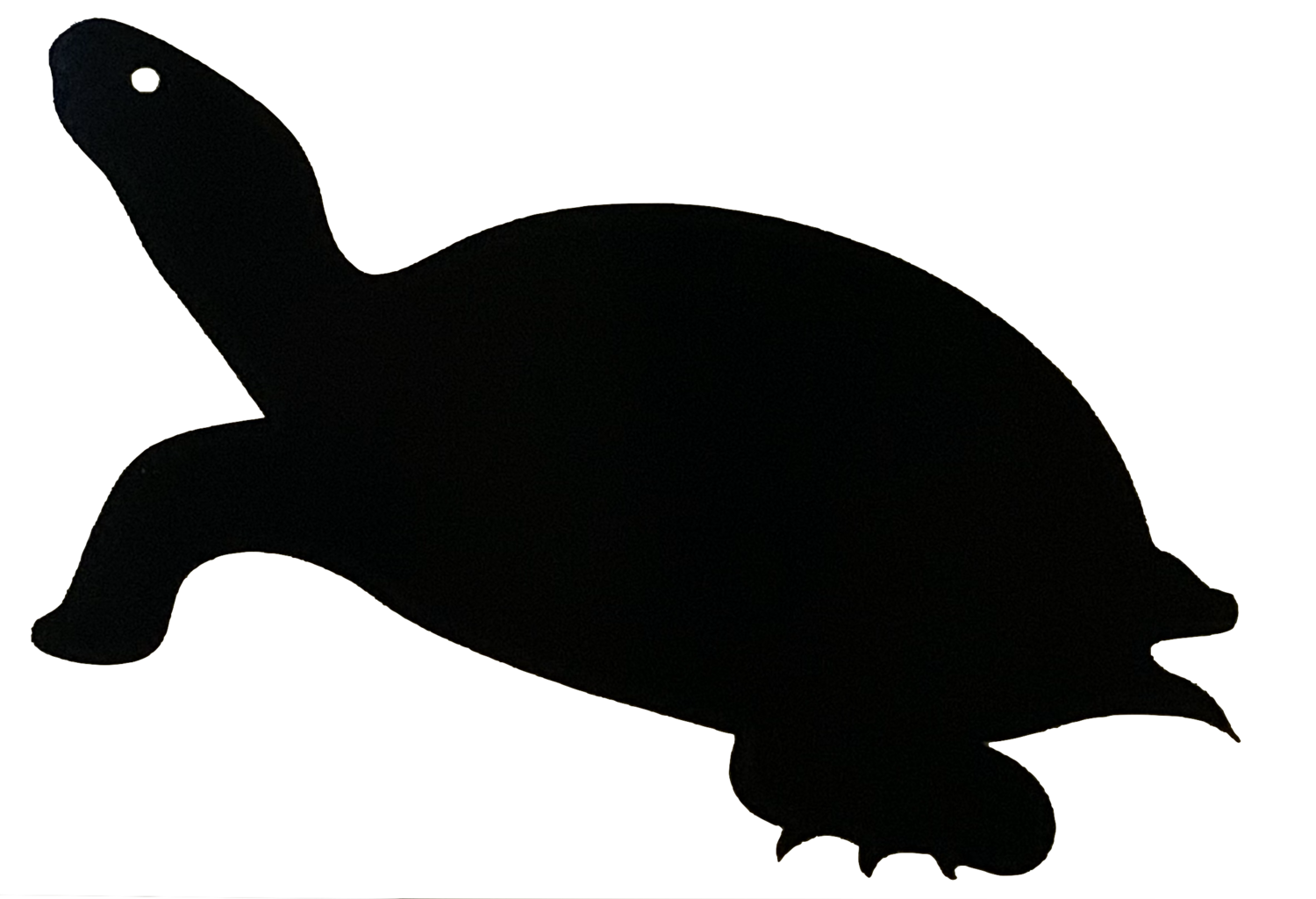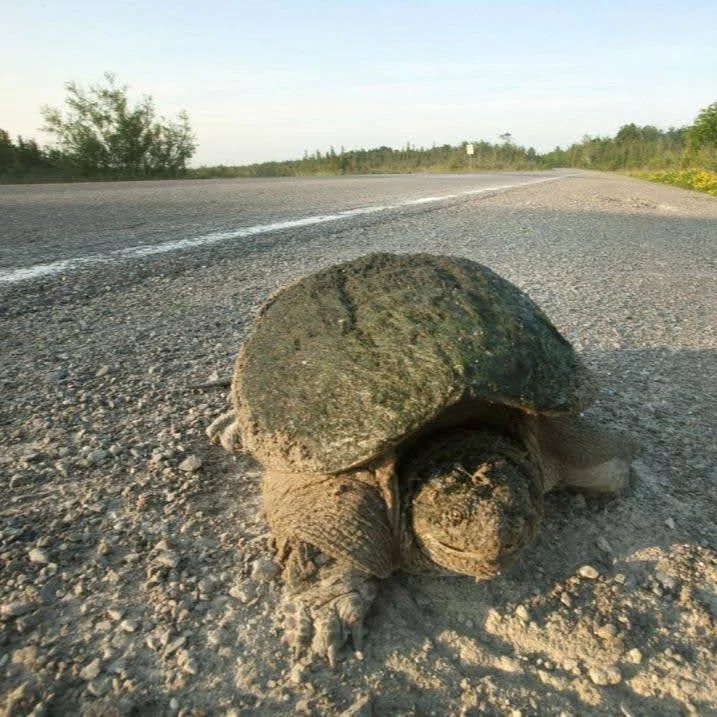Dispelling Myths about Snapping Turtles
You may have read this as a Facebook post previously! We loved this post from June 2020 so much that we had to share again as a blog post!
Turtles Kingston is committed to dispelling the myths that surround Snapping Turtles.
The perpetuation of the myth that they are ‘aggressive' and can ’bite off fingers and toes’ only reduces their chance of survival as people will be less inclined to want to help them in situations of need because of their unsubstantiated fears.
No, the Common Snapping Turtle found in the Kingston area, does not have the strength in their jaws to ‘bite off fingers’ or ‘break broom handles’.
According to a study in the Journal of Evolutionary Biology from 2002, a snapping turtle's actual jaw strength registered between 208 and 226 Newtons of force. By comparison, humans average a bite force of between 300 and 700 Newtons when we bite with our molars.
Yes, it will hurt and may require medical attention but being bitten by a Snapping turtle can easily be avoided by handling the turtle appropriately.
Unfortunately some people prefer to perpetuate the ‘drama’ of the myths then stating the simple truths. Embellishing the fear of this species will only result in the decline in their populations as people will be discouraged from responding to their peril.
Snapping turtles are NOT aggressive. The definition of an aggressive animal is one that has a quality of anger and determination that makes them ready to attack for no apparent reason. This is NOT the case with a Snapping Turtle. The only reason they ‘snap’, making them appear to be aggressive, is because their plastron (bottom shell) is too small for them to be able to retract into when they feel threatened. Their only measure of defence is to ‘snap’.
Snapping turtles only snap when they feel threatened!
Most Snapping Turtles encountered by humans are gravid (egg carrying) females who come up from the water to nest in the soft gravel found on the roadsides. They are semi aquatic and spend most of their time in the water where they feel the most comfortable because they can more easily evade what they perceive to be a predator.
The nesting females you meet on the roadsides can be ‘testy’ because they are less comfortable on land and are on a mission to lay their eggs. They will be sensitive about being approached because of their heightened vulnerability. Their response to you will be one of defensiveness, NOT aggression.
BIG difference!
Generally when encountered in the water, they will scurry away to hide. They can sometimes be inquisitive and may approach you in the water out of curiosity, NOT as an act of aggression.
They may snap in the water if you mistakingly step on them thinking they are large rocks.
They are ‘opportunistic hunters’ meaning that they will generally stay stationary and snap at something that passes by them that they perceive to be a food source. There may be a rare occurrence when a wriggling toe or finger appears to be an inviting food source.
It is simply a case of handling them with the recommended precautions to be prudent, not because they are ‘aggressive’.
Turtles have been on the planet some palaeontologists believe for more than 330 million years.
They survived what the dinosaurs couldn’t.
They are a keystone species which is defined as a ‘species on which other species in an ecosystem largely depend, such that if it were removed the ecosystem would change drastically.’ They are your freshwater source's best ‘cleaners’ and are referred to as the ‘janitors’ because of the vast amount of bacteria producing carrion and decaying vegetation they consume. Remove them from your freshwater sources and they will most likely implode with bacteria.
In providing this humble service, the only thing they ask in return is their survival.
They are like the rivets on an airplane wing; if you remove too many the wing falls off and you can no longer fly. That is how important their presence is to human life. Their significance on the ladder of biodiversity cannot be overemphasized. Remove them and it would be like trying to climb a ladder that is missing rungs.
The adult reproducing females we meet nesting on the roads are worth their weight in gold to their turtle populations. It is they who will contribute to the survival of their species. If we lose just one adult reproducing female, it will take 60 years for her to replace herself.
That is almost a human lifetime to replace just ONE Snapping turtle!
Less than 1% of all Turtle eggs survives to sexual maturity, mostly because of predation. That is why it is imperative to protect the adult populations who will be the saving grace of their species. As a species, Turtles just can’t keep up with the challenges we are throwing at them.
They are the most imperilled vertebrate species on the planet.
Just imagine, on the planet for more than 300 million years and in less than 50 years, we have sent them down the road to their extinction. It seems very unfair when you think about the service they render us by keeping our freshwater sources clean.
Only 2.7% of the worlds water is a freshwater source. 20% of that is found in Ontario. Turtles play the essential role in keeping that water-source clean. With rising temperatures, we are witnessing large populations migrating in the search of a fresh water source. There are currently more than 3 billion people on the planet that do not have access to a a fresh water source.
Turtles are doing their part but can we say the same about ourselves?
The main reason for the decline in their populations is habitat loss because of over development. Wetlands are your water regulators in times of flood and drought. They sequester huge amounts of carbon. They are your freshwater natural filtration units. 75-80 % of the wetlands in Canada have been developed. 95% in southern Ontario.
We are most definitely creating our own demise by our irresponsibility.
Yet somehow, an endangered species like turtles, pay for our irresponsibility and blatant neglect.
The turtle populations need all the help we can give them.
THANK YOU FOR BEING A TURTLE ROAD WARRIOR 🐢❣️



